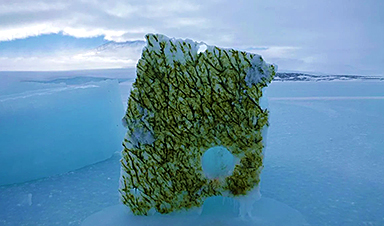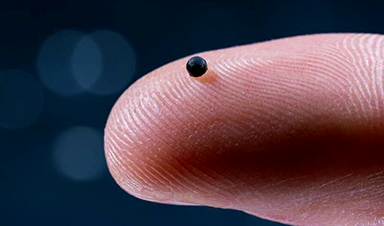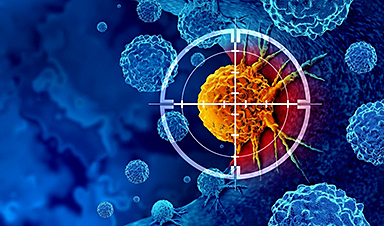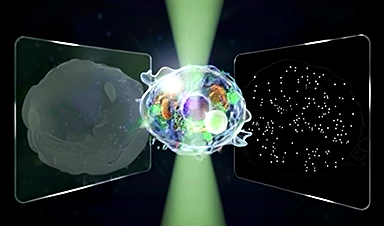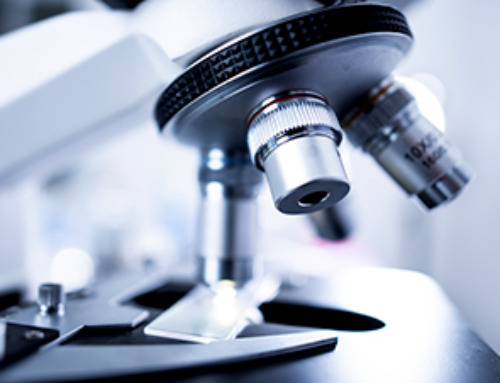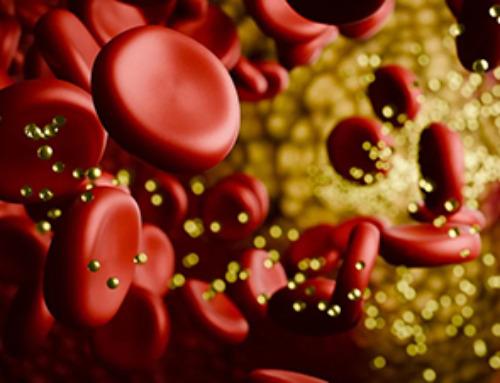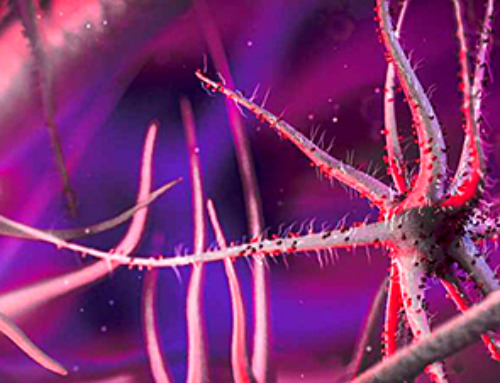Melting sea ice changes not only how much light enters the ocean, but also its color, disrupting marine photosynthesis and altering Arctic ecosystems in subtle but profound ways.
As global warming causes sea ice in the polar regions to melt, it is not just the amount of sunlight entering the ocean that changes. The color of the underwater light shifts, too, and this has major consequences for life below the surface.
According to new research published in Nature Communications, these changes could significantly impact tiny but vital organisms like ice algae and phytoplankton. The study was led by marine biologists Monika Soja-Woźniak and Jef Huisman from the University of Amsterdam's Institute for Biodiversity and Ecosystem Dynamics.
The international team of scientists, which included physical chemist Sander Woutersen and collaborators from the Netherlands and Denmark, explored how melting sea ice transforms the underwater light environment. Light behaves very differently in sea ice compared to open water.
Sea ice reflects and scatters most sunlight, letting only a small amount through, but that small amount includes nearly all visible wavelengths. Open seawater, on the other hand, absorbs reds and greens, while allowing blue light to travel deeper. This is why the ocean appears blue to our eyes.
Molecular vibrations of water
Another key difference between ice and liquid water lies in the role of molecular vibrations. In liquid water, H₂O molecules are free to move and vibrate, which leads to the formation of distinct absorption bands at specific wavelengths. These bands selectively remove portions of the light spectrum, creating gaps in the light available for photosynthesis.
Previous research by Maayke Stomp and Prof. Huisman demonstrated that these molecular absorption features create 'spectral niches'—distinct sets of wavelengths available for photosynthetic organisms. Phytoplankton and cyanobacteria have evolved a diversity of pigments tuned to the different spectral niches, shaping their global distribution across oceans, coastal waters, and lakes.

In ice, however, water molecules are locked into a rigid crystal lattice. This fixed structure suppresses their ability for molecular vibrations and thereby alters their absorption features. As a consequence, ice lacks the absorption bands of liquid water, and hence a broader spectrum of light is preserved under sea ice. This fundamental difference plays a key role in the spectral shift that occurs as sea ice melts.
Ecological implications
As sea ice disappears and gives way to open water, the underwater light environment shifts from a broad spectrum of colors to a narrower, blue-dominated spectrum. This spectral change is crucial for photosynthesis.
"The photosynthetic pigments of algae living under sea ice are adapted to make optimal use of the wide range of colors present in the little amount of light passing through ice and snow," says lead author Monika Soja-Woźniak. "When the ice melts, these organisms suddenly find themselves in a blue-dominated environment, which provides a lesser fit for their pigments."
Using optical models and spectral measurements, the researchers showed that this shift in light color not only alters photosynthetic performance, but may also lead to changes in species composition. Algal species specialized in blue light may gain a strong competitive advantage in comparison to ice algae.
According to Prof. Huisman, these changes can have cascading ecological effects. "Photosynthetic algae form the foundation of the Arctic food web. Changes in their productivity or species composition can ripple upward to affect fish, seabirds, and marine mammals. Moreover, photosynthesis plays an important role in natural CO2 uptake by the ocean."
The study highlights that climate change in the polar regions does more than melt ice—it causes fundamental shifts in key processes such as light transmission and energy flow in marine ecosystems.
The results underscore the importance of incorporating light spectra and photosynthesis more explicitly in climate models and ocean forecasts, especially in polar regions where environmental change is accelerating at an unprecedented rate.
Reference: "Loss of sea ice alters light spectra for aquatic photosynthesis" by Monika Soja-Woźniak, Tadzio Holtrop, Sander Woutersen, Hendrik Jan van der Woerd, Lars Chresten Lund-Hansen and Jef Huisman, 30 April 2025, Nature Communications.
DOI: 10.1038/s41467-025-59386-x
News
New mRNA therapy targets drug-resistant pneumonia
Bacteria that multiply on surfaces are a major headache in health care when they gain a foothold on, for example, implants or in catheters. Researchers at Chalmers University of Technology in Sweden have found [...]
Current Heart Health Guidelines Are Failing To Catch a Deadly Genetic Killer
New research reveals that standard screening misses most people with a common inherited cholesterol disorder. A Mayo Clinic study reports that current genetic screening guidelines overlook most people who have familial hypercholesterolemia, an inherited disorder that [...]
Scientists Identify the Evolutionary “Purpose” of Consciousness
Summary: Researchers at Ruhr University Bochum explore why consciousness evolved and why different species developed it in distinct ways. By comparing humans with birds, they show that complex awareness may arise through different neural architectures yet [...]
Novel mRNA therapy curbs antibiotic-resistant infections in preclinical lung models
Researchers at the Icahn School of Medicine at Mount Sinai and collaborators have reported early success with a novel mRNA-based therapy designed to combat antibiotic-resistant bacteria. The findings, published in Nature Biotechnology, show that in [...]
New skin-permeable polymer delivers insulin without needles
A breakthrough zwitterionic polymer slips through the skin’s toughest barriers, carrying insulin deep into tissue and normalizing blood sugar, offering patients a painless alternative to daily injections. A recent study published in the journal Nature examines [...]
Multifunctional Nanogels: A Breakthrough in Antibacterial Strategies
Antibiotic resistance is a growing concern - from human health to crop survival. A new study successfully uses nanogels to target and almost entirely inhibit the bacteria P. Aeruginosa. Recently published in Angewandte Chemie, the study [...]
Nanoflowers rejuvenate old and damaged human cells by replacing their mitochondria
Biomedical researchers at Texas A&M University may have discovered a way to stop or even reverse the decline of cellular energy production—a finding that could have revolutionary effects across medicine. Dr. Akhilesh K. Gaharwar [...]
The Stunning New Push to Protect the Invisible 99% of Life
Scientists worldwide have joined forces to build the first-ever roadmap for conserving Earth’s vast invisible majority—microbes. Their new IUCN Specialist Group reframes conservation by elevating microbial life to the same urgency as plants and [...]
Scientists Find a Way to Help the Brain Clear Alzheimer’s Plaques Naturally
Scientists have discovered that the brain may have a built-in way to fight Alzheimer’s. By activating a protein called Sox9, researchers were able to switch on star-shaped brain cells known as astrocytes and turn them into [...]
Vision can be rebooted in adults with amblyopia, study suggests
Temporarily anesthetizing the retina briefly reverts the activity of the visual system to that observed in early development and enables growth of responses to the amblyopic eye, new research shows. In the common vision [...]
Ultrasound-activated Nanoparticles Kill Liver Cancer and Activate Immune System
A new ultrasound-guided nanotherapy wipes out liver tumors while training the immune system to keep them from coming back. The study, published in Nano Today, introduces a biodegradable nanoparticle system that combines sonodynamic therapy and cell [...]
Magnetic nanoparticles that successfully navigate complex blood vessels may be ready for clinical trials
Every year, 12 million people worldwide suffer a stroke; many die or are permanently impaired. Currently, drugs are administered to dissolve the thrombus that blocks the blood vessel. These drugs spread throughout the entire [...]
Reviving Exhausted T Cells Sparks Powerful Cancer Tumor Elimination
Scientists have discovered how tumors secretly drain the energy from T cells—the immune system’s main cancer fighters—and how blocking that process can bring them back to life. The team found that cancer cells use [...]
Very low LDL-cholesterol correlates to fewer heart problems after stroke
Brigham and Women's Hospital's TIMI Study Group reports that in patients with prior ischemic stroke, very low achieved LDL-cholesterol correlated with fewer major adverse cardiovascular events and fewer recurrent strokes, without an apparent increase [...]
“Great Unified Microscope” Reveals Hidden Micro and Nano Worlds Inside Living Cells
University of Tokyo researchers have created a powerful new microscope that captures both forward- and back-scattered light at once, letting scientists see everything from large cell structures to tiny nanoscale particles in a single shot. Researchers [...]
Breakthrough Alzheimer’s Drug Has a Hidden Problem
Researchers in Japan found that although the Alzheimer’s drug lecanemab successfully removes amyloid plaques from the brain, it does not restore the brain’s waste-clearing system within the first few months of treatment. The study suggests that [...]
